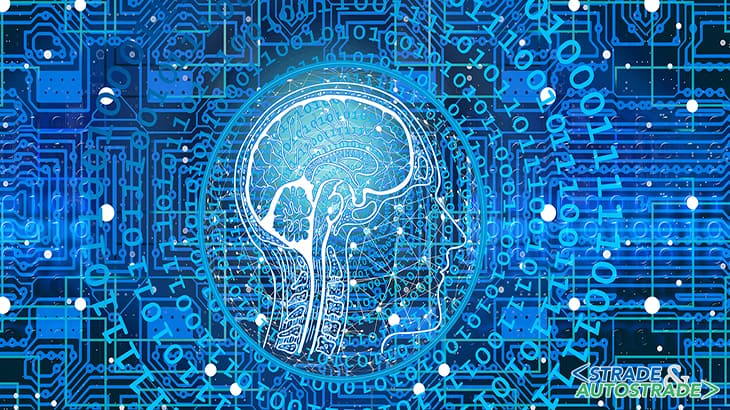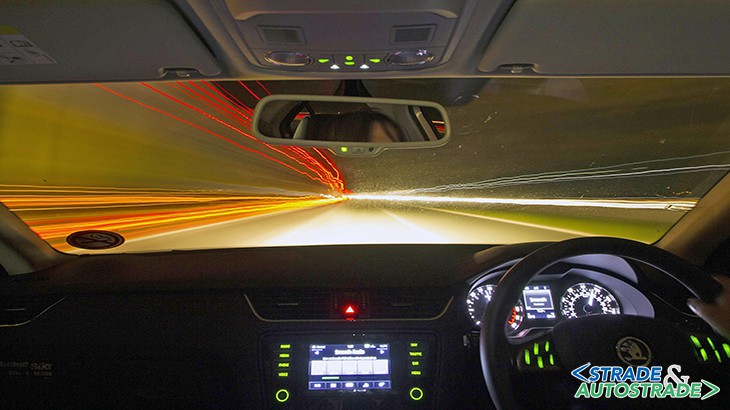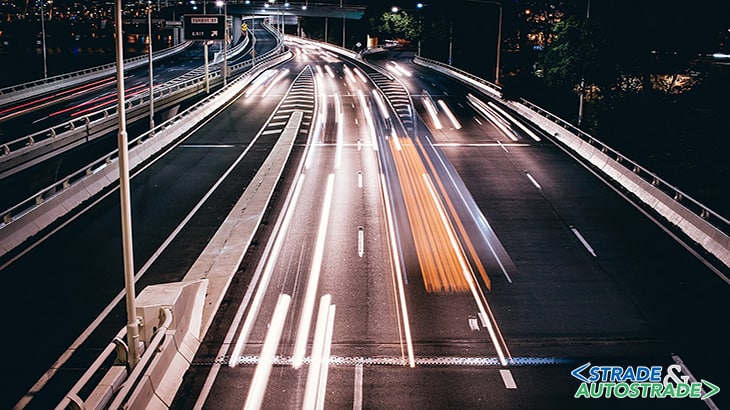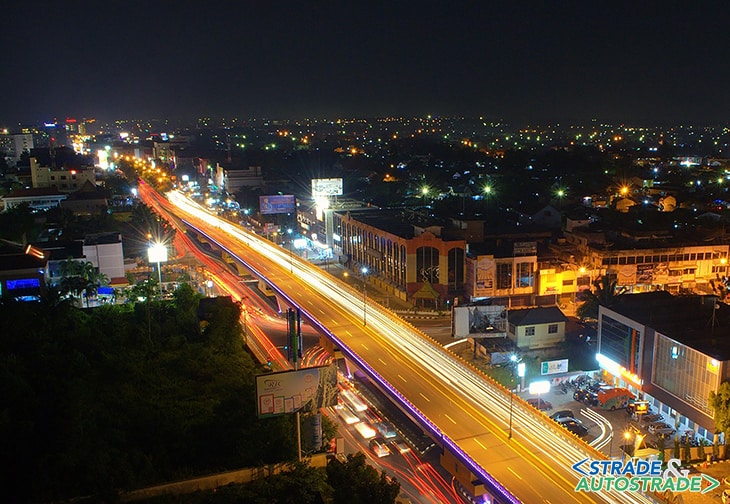Smart engineering and new technologies – part two ![]() Per la versione in Italiano: https://www.stradeeautostrade.it/its-smart-road/smart-engineering-e-nuove-tecnologie-seconda-parte/
Per la versione in Italiano: https://www.stradeeautostrade.it/its-smart-road/smart-engineering-e-nuove-tecnologie-seconda-parte/
After part one of the article on issue n. 137 September/October 2019 and https://www.stradeeautostrade.it/smart-road-digital-transformation/smart-engineering-and-new-technologies-part-one/ in which we exposed the analysis the current state of road infrastructure, the internal and external components and the factors that are conditioning significantly future choices, we now present the main applications and technical opportunities that the most updated technological development is gradually offering and that they will radically transform road infrastructure.
Here they also address the enabling factors needed to accelerate the adoption of new technologies, emerging innovations for the construction of the road infrastructure of the future.
The starting point is that the vehicles with connected/assisted driving/autonomous were designed, primarily, with the intent to eliminate human error in driving, optimizing management mobility in various aspects.
This is expected reduce the number of road accidents, which are for the most of them attributable to driver errors. One study conducted by the McKinsey Global Institute estimates that use self-driving vehicles could reduce accidents 90%, which could have resulted in savings of 190 billion US dollars (approximately 173 billion euros).
The future of vehicles is autonomy, which however is based on the evolution of infrastructure road, on new applications on board and those which will be used for the management of mobility and all related services. Here are the main applications in development (some of which have already reached a remarkable level of success).
Dynamic traffic management
It can facilitate the regular flow of traffic volumes constantly growth. The information generated by connected vehicles and by intelligent infrastructures offer road network operators the opportunity to radically improve traffic management anticipating future demand.
If all vehicles sent information about where they are going, they could provide traffic management systems a richer database from use to make traffic control more efficient.
There active traffic management (active traffic management, defined also smart asset management in the UK or Intelligent Transport Systems, ITS, in the U.S.) not only alleviates congestion, resulting in shorter travel times, but it can also help reduce air pollution produced in traffic jams.

15% reduction in fuel consumption after the adoption of signage coordination technologies (Texas Transport Institute)
Several ITS projects conducted in the United States have already given up their fruits: the coordination of signage telematics has come to cut fuel consumption by 15% by tapping at the same time a 19% reduction in greenhouse gas emissions.
This evolution requires closer relationships between the Managers street and private actors, especially in terms of sharing of data and analysis. For example, the sensors placed on his vehicles Autonomous driving Volvo collects data which is then stored in the Volvo Cloud and shared with the main Authorities Swedish road traffic.
When more vehicles will circulate on the roads a autonomous driving, these will generate large volumes of data that they will provide a real-time view of road conditions. Using this information, the road authorities will be able to manage and dynamically control traffic flows using a combination of real-time operational strategies e predictive.
Here are five examples of using advanced technologies.
- ramp metering : uses artificial intelligence (AI) to interpret real-time traffic data in order to check the flow of vehicles entering highways or expressways, increasing the efficiency of lane entry and reducing the number of accidents;
- Speed Monitoring : makes use of technologies such as smart cameras for detection of speed, to warn drivers that they are passing or are about to exceed the speed limit. More sophisticated cameras they can also detect speed by vehicle type, any prohibited overtaking, driving in the emergency lane and even infractions related to the use of a seat belt and of the mobile phone. In addition, the Dubai Road Authority has developed over 500 “friend” radars that only serve to warn drivers without imposing any penalty;
- dynamic lane control (Dynamic Lane Control): uses both predictive and real-time traffic data for create temporary lanes and even reverse the sense of march to relieve congestion at peak times. There testing in Auckland, New Zealand, started in 2017;
- dynamic and free-flow toll: the dynamic toll is rule, for the use of roads in real time, based to present demand and data-driven forecasts historians. Dynamic toll calculation systems come used in high density occupancy lanes, generally charging an amount for drivers without passengers. At the same time, the free-flowing toll (free-flow or open-road) allows the Authorities to collect tolls without requiring cars to slow down at toll booths, with a consequent reduction of congestion, accidents and carbon emissions. There are various ways to locate when certain cars enter and leave the streets toll, for example the installation of electronic signs in cars and automatic license plate recognition;
- acceleration of responses to emergencies (Accelerating Emergency Response): the video analysis software, developed through AI, it can process the images of the cameras to quickly find collisions and send emergency services. The fastest intervention of these services will result in more lives being saved.
Information on real-time traffic (real-time traffic reporting)
Use dedicated short range communication transmitters (DSRC) to allow vehicles to share with other vehicles and with units along the way real-time information on road works and accidents.
This system has been installed in Singapore by the Land Transport Authority, the Transport Authority terrestrial, in the context of testing vehicles self-driving. In addition to promoting traffic management, the new technologies can also help governments and managers of the roads to provide vital services and maintain better assets critical.
In some countries, including the United States and South Korea, road authorities are experimenting with the use of drones for bridge inspections in an attempt to cut costs and reduce to minimum risks for Employees.
Sensors placed in bridges, tunnels and other infrastructures provide data on the state of these, data which in turn can minimize problems and improve the efficiency of repairs and maintenance.
Using techniques such as counting on highway ramps (ramp metering) and dynamic lane control, you have the potential to reduce both congestion and pollution; the data collected from the drivers’ smartphones, the images satellite, etc., can be used to allow use more efficient than the roads.
Big Data and the sharing economy are facilitating Mobility as a Service (mobility as a service). Digital services allow not only a more efficient distribution of vehicles on the roads, but also a more efficient use of vehicles by of passengers. However, services like these, based on sharing of data, need policymakers and Supervisory authorities find a fair balance between practicality and privacy.
Self-driving trucks
Among the various types of vehicles, the rise of self-driving technologies it will presumably be pulled by trucks, from which there expect stable yield. Driverless trucks they can operate for a greater number of hours, because they eliminate the need for frequent rest breaks and restrictions on working hours that apply to human drivers.
The growing e-commerce sector will also always rely more to such trucks to complete the last link in the supply chain: self-driving trucks could indeed facilitate more frequent deliveries at all hours of the day, increasing so productivity. This could have a significant impact even on infrastructure traditional roads. Larry Burns, former Vice President General Motors Research and Development speculates: “Today we have to design highways, expressways and bridges capable of withstand loads of over 36 t.
With self-driving trucks, it may not be necessary take into account a similar weight. The maximum load it could be halved, or perhaps even divided into parts smaller, because same-day deliveries and e-commerce they will involve smaller and more frequent shipments.
“The trucks self-driving have the potential to contribute to an extent significant to improve the efficiency of the supply chain also in long-distance freight transport.
Truck tests platooning ”(literally, the grouping of trucks in platoons), in which a convoy of autonomous trucks follows a truck driven by a human driver, they are going in Europe and, more recently, Singapore.
The Ministry of Transport and the Singapore Port Authority have in fact signed an agreement with two automotive companies, Scania and Toyota Tsusho, to design and test the system of platooning of self-driving trucks.
Has been designed a freeway for the 10 kilometer test run. Self truck platooning will give positive results, the road authorities they will have to consider the benefits of truck lanes in the development of future infrastructures. The platooning system provides for the separation of the various trucks to allow the other vehicles in transit on public roads to cross, another fundamental consideration for the responsible Authorities and the managers of the roads.
Data drives: data at the service of mobility
The new ways of exploiting traffic data are changing the way the road authorities approach the traffic management. The future of intelligent infrastructure it is not in the increase in the number of sensors and cameras in the road network.
As Hari Balakrishnan, chief points out Cambridge Mobile Telematics technology officer and Professor at MIT, it’s a question of scale: “In many places the economy does not justify the use (of sensors and cameras)”.

Innovators are switching to smartphones
Holly Krambeck, World Bank Senior Economist, he explains: “Using cell phones as sensors is a very way more convenient to collect the data that cities need for plan infrastructure projects.
Physical sensor networks are expensive not only to build, but also to maintain. With the cell phones we collect data most frequently in areas wider areas of the city, thus obtaining higher quality data a lower costs”. The huge spread of cell phones has actually transformed drivers in individual traffic investigation tools.
In Boston, an app called StreetBump, activated by drivers, it is used to identify any holes. If one road surface deformity is the subject of three reports separated in four days, it is reported to the local authorities, which can therefore direct resources more efficiently for maintenance.
It is “a relatively low technology cost and fairly easy to replicate from any jurisdiction you want to adopt it” – says Ken Leonard, Director of the Intelligent Transportation Systems Joint Program Office at the US Federal Highway Administration.
Waze, an app by navigation that provides users with traffic data on time real through crowdsourcing, started sharing with the Anonymized, but granular, data governments to complement traditional ones data collection actions.
Information such as infrastructure (“date as infrastructure”)
They constitute one of the most important elements we have right now”- explains Di-Ann Eisnor, Manager of growth at Waze. Through its Connected program Citizens, the Waze app collects data from drivers for regarding traffic jams, accidents and potholes.
These notifications support even emergency services. Eisnor explains: “In the United States 70% of the accident reports reach the centers of traffic control first from Waze than from 911 (the number of emergency).
Consequently, with Waze’s data, paramedics arrive at the scene of the accident with four or seven minutes of advance”. It is a mutual mechanism, in which the road authorities provide Waze with information on traffic closures
and accidents, which in turn are among the factors of choice of the route generated by the app for its users. Thus Big Data support another emerging trend: Mobility as a Service (see the following section).
In the meantime they are also emerging numerous uses of satellite technology in traffic management. In 2013 the EU completed a draft proof-of-concept for a management system satellite-based traffic called SafeTRIP.
The project, which involved the installation of a small reading device in cars, it has shown potential for many applications road safety and traffic management, including the monitoring of road conditions and improvement of emergency response times. In Singapore it is currently a traffic management system based on satellite, whose implementation is scheduled for 2020.
Mobility as a service, mobility as a service
The integration of various modes of transport into a single service mobility, accessible on request, is known as Mobility as a Service (MaaS). Big Data generated by intelligent infrastructures, connected vehicles and smartphones, together with the range of public and private transportation options are leading the emergence of a new user-centric transportation paradigm, precisely defined Mobility as a Service.
The platforms of this type, they combine real-time data on transport with user preferences for speed, comfort and convenience, allowing people to follow the fastest or cheapest route to your destination using the optimal combination of media.
This approach is particularly tempting for planners urban movements in view of the expected situation for 2050, when, according to forecasts, two thirds of the population world will live in cities.
Thanks to a closer link between supply and demand, the MaaS has the potential to move more people and goods around in faster, cleaner and cheaper ways than options current. The Maas is closely related to the growth of sharing economy.
Experts believe that, if used on a large scale, these services shared have the potential to improve significantly the efficiency of the transport sector, reducing congestion traffic and related problems.
A case study from the Portuguese capital, Lisbon, presented by the OECD illustrates that, if buses and coaches were used self-driving shared cars instead of personal vehicles, there would be a reduction of emissions of as much as a third and a cut parking space by 97%.
Greg Archer, Clean Vehicle Manager at Transport & Environment also estimates that in a sharing economy it could just 10% of the current number of vehicles is sufficient.
Although MaaS is still in an absolutely developmental stage initial, pilot projects are underway around the world, e.g. in Helsinki, Paris, Eindhoven, Gothenburg, Montpellier, Vienna, Las Vegas, Denver, Singapore and Barcelona, and they are laying the groundwork for mass adoption.
However, reaping the maximum benefits from MaaS will not be a feat recently. Will ask for the availability of the operators of public and private to share data and information on time real, with also the important requirement of the integration of operating systems, booking and payment of suppliers of transport.

Great power involves great responsibility
A critical debate is ongoing on property and security of the large amounts of data collected and generated by the intelligent transportation, including smartphones and vehicles. From the point of view of data security – explains Gammons, “is of concern the question of who is the owner in the first place some data. Is he the car owner? Is he the traveler? It is the Manager or is it the Transport Authority?”.
The United States government departments are urging manufacturers to share information on how the data comes collected and made available by vehicles.
Enhanced connectivity can also expose vehicles to more risks related to cybersicurity, potentially allowing hackers to control basic functions like the steering and braking.
Some companies, including Google, have started limiting the connectivity of automobile systems connected, while other car manufacturers, explains Stanley, they are “involving professionals in the business that are not necessarily they know the automotive, but who are experts in security and hacking, because they absolutely must protect their cars”.
Another cause for concern are possible malfunctions of the software on which these systems depend any errors of an algorithm can determine the selection of suboptimal routes or an indication of a wrong turn.
“The level of responsibility that derives from relying on always greater than these algorithms will make us all more reliable” – says Eisnor. The impact of big data on transportation has barely began to be felt, and, since technology advances at a rapid pace, solving these issues is becoming a key consideration for government authorities and policy makers, as explained in more detail in the next chapter.
Harness the energy produced by passive goods such as infrastructure
Governments have started to experiment with infrastructure that generate energy in two ways. The first option it is mechanical, and consists in the production of energy from the traffi c itself by means of piezoelectric technology.
Installed on road surfaces, these can produce electricity when a vehicle transits the road. To date, the most advanced technologies have yields electricity of just 20-30%, which go down even 10% in some low devices cost.
It is a promising technology for urban areas with heavy traffic, where energy is more likely to be produced continuously and can be used effectively. A second option for it exploitation of road energy consists of solar panel road technologies. Another way to integrate road infrastructure existing in order to contribute to the production of energy is through wind turbines.
Towards road surfaces with a negative carbon footprint
Making abundant use of concrete, the construction of the roads has a heavy carbon footprint. The most important universities and businesses are working hard to redesign concrete and make it more sustainable.
By adjusting the percentage of ingredients, MIT Researchers have created concrete samples twice as strong as the material standards, which will allow engineers to use less concrete. The aim is to reduce anhydride emissions carbon dioxide (CO2) of 60%.
According to reports, Richard Reman of Rutgers University would have produced a cement which uses less limestone than conventional technologies and absorbs CO2 as it dries and solidifies.
In 2016 the Consortium of the LEILAC project (Low Emissions Intensity Lime and Cement) has launched a focused experiment on carbon capture and storage.
MIT researchers also found that the weight of the auto affects road surfaces, increasing endurance and thus increasing fuel consumption by 1-3%. For increase the strength and durability of concrete, the researchers are drawing inspiration from the structure and properties of exceptionally robust natural materials such as bones, shells and deep sponges.

Microbiologist Hendrik Jonker is said to have invented a concrete capable of self-repairing by mixing it with limestone-producing bacteria capable of surviving up to 200 years without oxygen or food. At the onset of cracks, the bacteria they feed on water and produce limestone, which effectively seals the cracks, thus extending the life of the roads.
The ability of road construction projects to incorporate new materials like these will be supported by innovations digital like BIM (Building Information Modeling) e virtual construction simulation (Virtual Construction Simulation), which allows architects to evaluate the impact structural and environmental that alternative materials will have in throughout the duration of the project.
Taken together, these technological trends indicate solutions that can respond to the challenges generated by the growth of traffic, alleviating congestion, reducing emissions of carbon and air pollution and improving safety of the streets.
Smart infrastructures and technologies smart surfaces will facilitate the emergence and the the spread of self-driving vehicles and electric vehicles. Interest seems unlikely of the private sector towards automotive technology idiots shortly, therefore delays aside governments to make decisions will limit possibility instead of strengthening them. Not to act would be an error.
Following, Economist Intelligence Unit will present two scenarios depicting the directions vastly different than the world could take depending on the level of adoption of
these new road technologies. The first scenario shows what the world would look like if you did adopted innovations in road technologies to mitigate the challenges posed by rising traffic, while the second describes a world that is been unable to act.
Read part one of the article on issue n. 137 September/October 2019 and on https://www.stradeeautostrade.it/smart-road-digital-transformation/smart-engineering-and-new-technologies-part-one/.
Smart engineering and new technologies – part two ![]() Per la versione in Italiano: https://www.stradeeautostrade.it/its-smart-road/smart-engineering-e-nuove-tecnologie-seconda-parte/
Per la versione in Italiano: https://www.stradeeautostrade.it/its-smart-road/smart-engineering-e-nuove-tecnologie-seconda-parte/
> Se questo articolo ti è piaciuto, iscriviti alla Newsletter mensile al link http://eepurl.com/dpKhwL <

